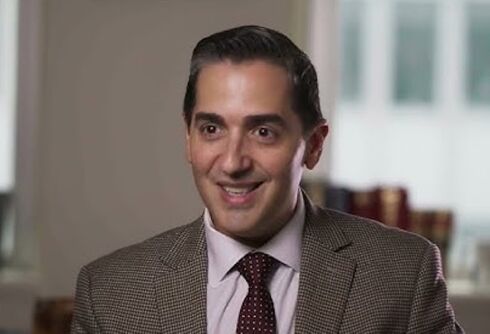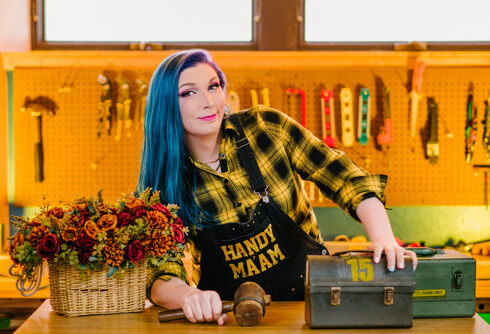Last month, the American Medical Association (AMA) announced their pledge to advocate for banning conversion therapy everywhere. This was great news for many and a step toward bringing an end to the harmful and widespread practice.
“The most interesting response, I would say, is people saying, ‘They still do that? I thought that was done in the ’50s and ’60s. No one does that anymore,'” Elena Joy Thurston told LGBTQ Nation. “And, that’s where I was exactly four years ago. I didn’t know the term ‘conversion therapy’, I had no idea what it meant.”
Related: Rep. Pramila Jayapal wants transgender people in Congress
Over four years ago, Thurston lived a typical “literal picket fence” life, as she once described it in a TEDx Colorado Springs talk. She was a Mormon-worshipping wife and mom of four.
Never Miss a Beat
Subscribe to our newsletter to stay ahead of the latest LGBTQ+ political news and insights.
Suddenly, her attraction to a friend of hers bought her to the realization that she may not be straight. “I was simultaneously grounded and feeling a high I had never experienced before — how could something that felt so good… be so wrong?”
Thurston tried to consume her thoughts with things like running and fly fishing, before turning to her husband and religion to help her. Immediately, she sacrificed all of her privileges in the church and public displays of belief. Facing excommunication from the religion she’d known since turning 16 years old, Thurston entered conversion therapy.
“I was 38 when I realized I was in the arena, I was face down in the dust — in fact, I wasn’t even on the arena floor, I was on the pit that I had dug myself,” she said in her TEDx Talk that came out this November.
She endured months of therapy (“two hours a day, four days a week”) that ended up costing several thousands and didn’t make her feelings go away — instead, it made Thurston feel suicidal and like a”failure” afterwards. Eventually, with the help of a few friends and her hobbies, Thurston found enough strength to file for divorce and come out to her kids.
Now, she lives in Arizona and happily takes her girlfriend on fly fishing trips while leading retreats when she’s not fighting to bring an end to the exploitative practice of conversion therapy. “I didn’t need to pray the gay away. Being gay had bought me more happiness than I’ve ever known,” she told her TEDx audience.
While there are conversion therapy bans popping up all over the continent, many only protect minors and some contain religious exemptions. New York City’s ban, for example, had so many loopholes that LGBTQ advocates actually pushed them to repeal the law and rely on the state’s ban of the practice instead. Elsewhere, a survivor of such ‘treatment’ in Colorado, who wasn’t protected by a state ban of the practice, recently passed away only a few weeks after opening up about her experience.
In the wake of the AMA’s excitement-inducing decision, Thurston talked with LGBTQ Nation to discuss what an announcement like this means for her activism, and what the reality of being a conversion therapy survivor is like.
—
LGBTQ Nation: First, hello Elena. Tell us who you are, and where you are based.
Elena Joy Thurston: I’m Elena Joy Thurston, a mom, motivational speaker, retreat leader, and a writer. I am based out of Queen Creek, Arizona, outside of Phoenix.
QN: What main topic do you speak about?
EJT: My main topic is helping people navigate personal transitions — so it could be people who are going through a divorce, people who are going from a corporate 9-5 job to a start up… It could be a homemaker who’s now an entrepreneur… any life transition, I coach on how to successfully navigate that since I’ve been through them a couple of times.
QN: You did a TEDx Colorado Springs Talk recently. Tell us about what you talked about, and what that experience talking there was like.
EJT: Yes, it was recorded in September but went live [in late November]. I talked about my experience realizing I was gay and trying to go through conversion therapy to ‘fix me’, the fallout of that, and how I’ve come to really embrace my life right now.
It was an intense experience. At that time, I had only came out to people in person. My ex-husband knew, in the [TEDx] Talk, I talk about coming out to my kids… I certainly had never did anything on that large of a scale. There was about 900 people in the live audience, so that in of itself was intense – then to have, three months later, 40,000 views in the first week, and that was intense as well.
QN: Before that, how open were you about your history with conversion therapy?
EJT: I spoke about it especially when the AMA did their announcement [on banning conversion therapy] and I worked with the local group who is trying to get it banned in Arizona, and right around the same time, Utah also had it on their ballot. The Mormon Church — which I’m a part of — they came out and said they didn’t want the initiative to get passed, which essentially killed it, because so many Mormons are here. That’s when I got pretty vocal about it.
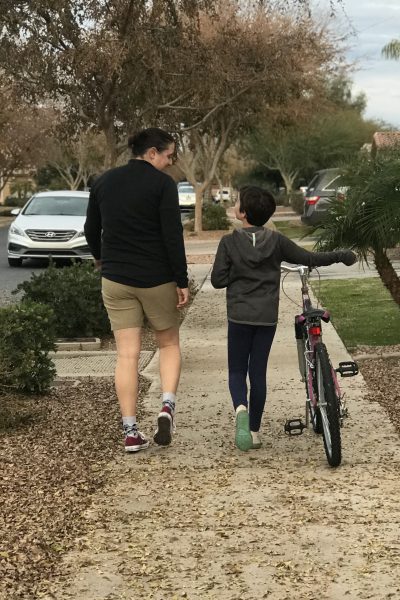
QN: So the Mormon Church fought to keep [conversion therapy] legal? Do you know what their reasoning was?
EJT: Yep, yep. So, they want to be able to protect their clergy, so that if you have a religious preference — and you work in a religious capacity — you can perform or recommend conversion therapy without having legal repercussions, and they got it. Governor Herbert changed it, and added in this stipulation that if you are doing it within a religious framework, you won’t have a punishment, which is a bummer.
I mean, everyone in Utah is celebrating, because [the resolution] went through — it’s only for minors, and again, the religious capacity is protected – but Arizona and other really conservative states around here were watching Utah to see what would go through there, and then kind of see that as precedent and copy that.
Unfortunately, the suicide rate for people that go through conversion therapy is 57%. If you take it down to the people who chose to go through it due to family or religious leaders asked them to, it actually goes up to 68%. So I really feel like that’s huge to us, what Utah’s doing to its population by allowing religions to move forward with conversion therapy.
QN: What was your reaction when Utah’s resolution with this stipulation passed?
EJT: I was sad for the precedence it sets, and I was really sad that in the press release, the governor didn’t name the church directly. He said, “We did what we had to do to get the stakeholders on board.” To me, the fact that a religious organization is considered a stakeholder in legislative law… that’s the direct opposite of what our country is founded on, separation [of church and state]. That’s ridiculous, but that’s how it goes in Utah.
The leading cause of death for youth in Utah is suicide. That’s not a great statistic for that state.
QN: In Arizona, what is the biggest obstacle to your fight, as of now?
EJT: In Arizona, it’s not just about conservative values, which are rampant in this state, but it’s also about [that] here in the west, there’s definitely a mentality of “the government doesn’t know better than me.” So the often-used response to [banning conversion therapy] is, “You don’t know my kids — if I decide my kids need a certain type of help, I should have the right to choose that.”
I’m a mom of four kids, I totally get that logic. No government knows my kids more than I do. However, in our society, when parents choose to not protect their kids, society steps in and does it for them. That’s why we have seat belt laws, child porn laws, child labor laws. If you’re not going to protect your kids from a practice that causes 60% [of recipients] to commit suicide, we should do it for you.
QN: What would you say has been your most interesting response to when you speak on conversion therapy?
EJT: The most interesting response, I would say, is people saying, “They still do that? I thought that was done in the ’50s and ’60s. No one does that anymore.” And, that’s where I was exactly four years ago. I didn’t know the term ‘conversion therapy’, I had no idea what it meant.
QN: As a gay person, how did you come to terms with your experience surviving [conversion therapy] yourself, and how that helps you fight it?
EJT: There are very few conversion therapy survivors. There’s not a lot of people that tell the story. So, it’s left up to the families, the victims, and the survivors that are in a healthy enough mental state to say the words, especially in a public forum.
I get hate mail every day. That’s okay, because I’m in a place where I can handle that. Most conversion therapy survivors are not. I feel like, since I was the Mormon minivan mom, like… I lived that life 100%, full out. Like, my boys were in Boy Scouts… I baked bread every week… I did the whole thing! I feel that I have the privilege since I lived that middle class, white, suburban lifestyle — very straight — I can reach that population. I can say, “This is what’s happening to people, and it’s resulting in death. It’s not okay.”
QN: What’s your next step in advocating against this?
EJT: Well, that’s why the AMA announcement is so important, because we do not have a national organization. We have all of these grassroots organizations in different counties and states, but there’s no national effort to make this go nationwide.
Now, we only have 18 states and a few counties that have banned [conversion therapy]. Here in Arizona, we have one county that’s banned it. Minnesota’s [resolution] just passed, but only in the Minneapolis city limits. One passed in Florida, but only in the Tallahassee city limits. So, my next step is trying to get national attention on the issue, so that someway and somehow, we can get national effort organized.
QN: What do you do to get away from the downsides of this work?
EJT: It’s crucial and needed for my mental health, [that] me and my girlfriend really like fly fishing — we go fly fishing a lot… and we live in the desert. (laughs) We actually do fish a lot here, but we actually travel all over the world to do it — we’ve been to Argentina, Belize, Alaska … everywhere.
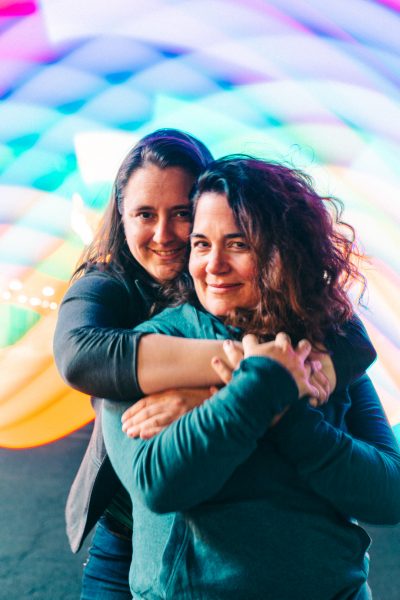
QN: Is there anything that the ‘average person’ could do to help you?
EJT: My biggest dream, the reason why I do this constantly, I have this thought is that like, a 17-year-old comes out to his dad, right? And this dad loves his kid, but he knows that being a gay man in America is not easy. It’s hard, and he doesn’t want his son to have a hard life. So he’s trying to think, how can I help my kid? So he goes to work the next day, and he’s talking to his best friend… and I see two scenarios.
There’s one where that friend says, “Oh, there’s camps for that. You can get that fixed. You should look into conversion therapy camp” – Or, the other scenario is [where the friend says], “Dude, I heard this TED talk, and the suicide rate is really high [for conversion therapy]. Don’t go there. Do whatever you need to do, go to therapy, but don’t do conversion therapy. That will kill your kid.”
I want it to be something that’s known, you know, because I don’t think if parents knew that there was a 60% suicide rate, no parent would send their kid to a conversion therapy camp. I don’t think any spouse would say, “Yeah, go see this guy, let’s pay him a lot of money – maybe he’ll fix you,” knowing that there’s a 60% chance they’re giving up their spouse forever.
QN: I’m sure you think it’s all cruel, but what do you think is the cruelest, most egregious part of conversion therapy?
EJT: So, when I went, I was Mormon and so I knew that if I couldn’t be ‘fixed’, I was going to be excommunicated… I wasn’t going to go to heaven with my kids, I wouldn’t have my marriage anymore — I had some serious s**t on the line.
So there I walk into this office, and this guy says, “I’ve been a therapist for 40 years now, and I know that you only have same-sex attraction because of trauma in your past. If we heal the trauma, we’ll fix you, and you’ll be attracted to men. It’ll only take a month or two.”
So my conversion therapy was four days a week, two hours a day, $270 a day. Two months went by, and I wasn’t fixed. Four months went by, and I wasn’t fixed. Seven months went by… and I was on a s**t ton of drugs, and I finally came to the realization ‚ the Brett Kavanaugh hearings were happening — I realized, three-quarters of the women in America have been traumatized. Three-quarters of the women in America are not gay!
It was that realization that made me move on and choose a different path… but when I think about the thousands of dollars that man made because I wanted to get into heaven… that’s sick.
The Mormon Church will tell you over and over again, they’ll release these press releases, that they do not support conversion therapy, their counselors don’t practice it, blah blah blah. My husband made a lot of money, so we paid the bill ourselves. At the end of each session, he would forget to swipe my card. One day he finally said, “Yeah, you’re the only one who pays me. Every one else, their bishops pays for them. It’s coming out of their war room.” So the Mormon Church is paying for conversion therapy, whilst saying they don’t support it.
QN: Now that the AMA has made this recommendation, what’s your reaction? Of course, you still have a fight, but what are you going to do next?
EJT: My reaction is total excitement because it validates [banning] it, it’s science. What I definitely want to do next is just continue to spread the word. Luckily, the media has been really welcoming to me, like [LGBTQ Nation]. I’ve been able to do some really good interviews, and a book agent has reached out to me, so it looks like in 2020, I’ll be writing a book, which is awesome!
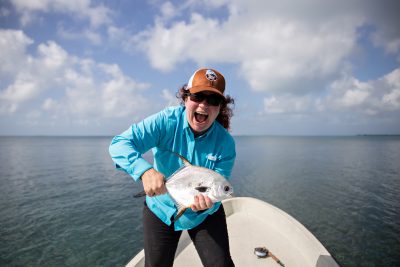
QN: The hook to the AMA recommendation is that it was made by its interim meeting which is held with “soon-to-be physicians, medical students and future leaders in all of medicine.” So, it’s the first step in getting the full [association’s] recommendation. The AMA did stop recommending it in 1996, and have been against it since 2012. So, does that change anything for you?
EJT: Not at all.
QN: What would you hope is the AMA’s next step?
EJT: Well, with such a huge organization, I’m pretty sure they have some lobbyists in Washington, DC. So I would hope they would use those lobbyists to find those legislators that will take it on and bring up a national bill on it [to the floor].
QN: To the survivors out there that might read this, what would you want to tell them?
EJT: You’re only a survivor until you’re a statistic. You’ve got to protect your mental health… that’s what I have to tell myself.
—
Elena is currently embracing ‘Life 2.0’ as an inspirational speaker, transformational retreat leader, and a writer. You can watch her TEDx Colorado Springs speech below, follow her on Instagram (@elenajoyexperience), and learn more about her life and work from her website, www.elenajoyexperience.com.
Don't forget to share:











